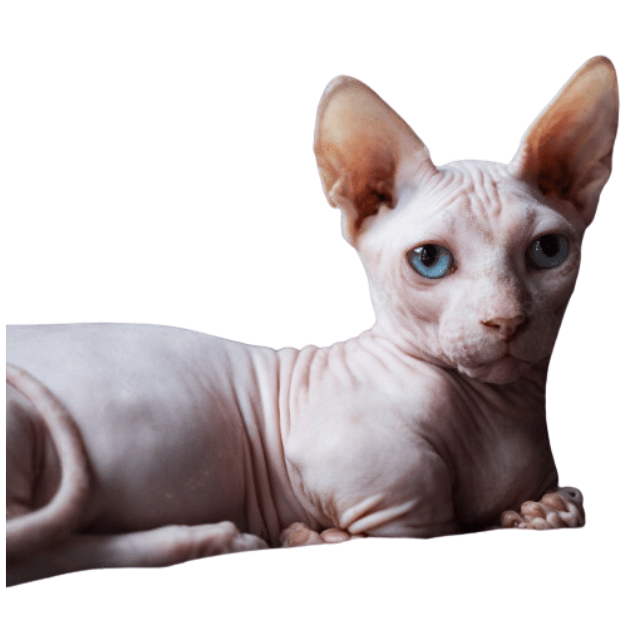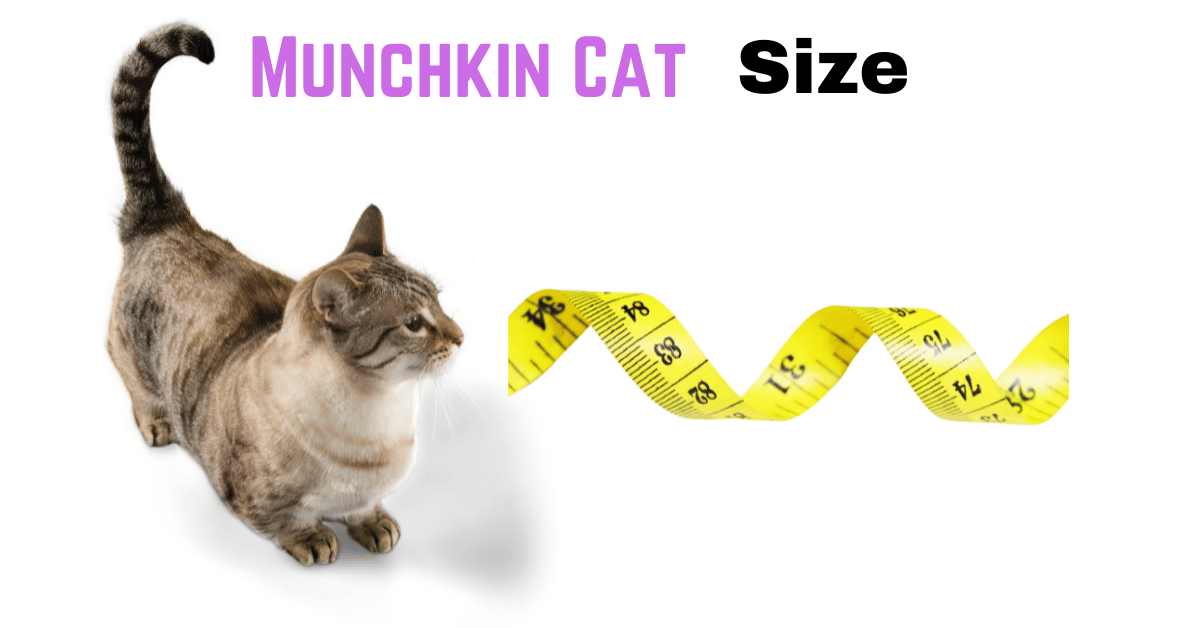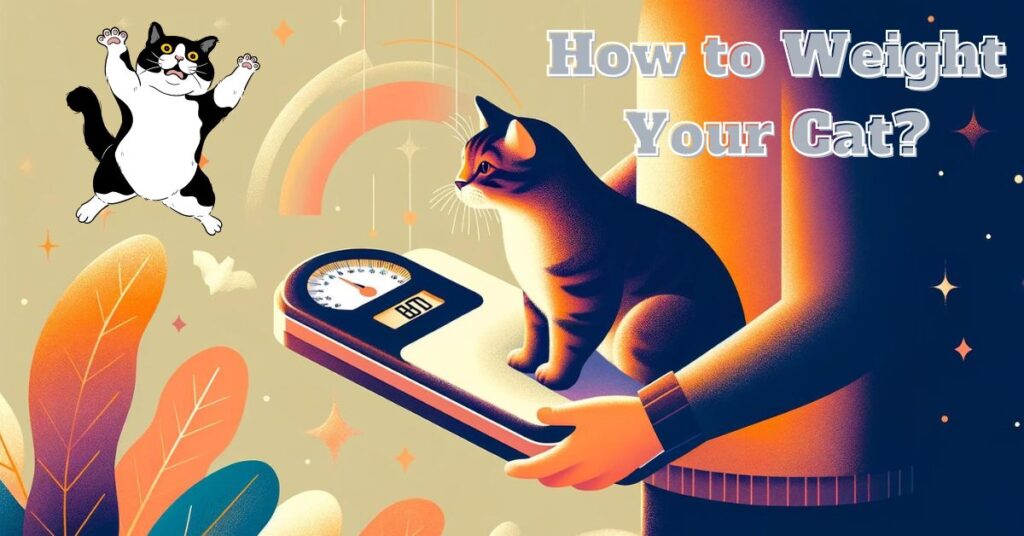This post contains affiliate links and I will be compensated if you make a purchase after clicking on my links.
Munchkin Cat Size: Compact and Curious
Munchkin cats, recognized for their distinctive short legs due to a genetic mutation, have a unique silhouette that distinguishes them from their longer-legged feline friends. Their movements are lively and agile, full of energy, much like their longer-legged counterparts, though their stature is notably lower to the ground. Despite their shorter legs, the overall body length of a Munchkin cat aligns closely with other cat breeds, typically stretching up to about 18 inches, excluding the tail.
When fully grown, Munchkin cats generally stand between 5-8 inches tall at the shoulder and weigh around 5-9 pounds. This petite stature is maintained throughout their lives, influenced by their genetics, which necessitate thoughtful breeding practices.
Fact: To ensure the health of future generations, Munchkins are always bred with non-Munchkins, because breeding two Munchkins can lead to fatal genetic complications.

Growth Stages of Munchkin Cats
Munchkin kittens undergo significant development in their first 9 months. Initially born weighing just around 3 ounces and unable to see or walk, they quickly grow into energetic and playful kittens, reaching up to 2½ pounds by the end of their second month.
During this crucial early phase, consistent human interaction is vital; kittens that don’t receive enough attention during the first 3 to 9 months may develop a lasting wariness of people.
If you’re interested in how your Munchkin will size up as they mature, here’s a straightforward look at their expected growth milestones.

- 3 months: Weighs between 3–6 pounds and stands 4–5 inches tall.
- 6 months: Grows to 4–7 pounds, with a height of 4–6 inches.
- 9 months: Reaches a weight of 5–8 pounds and a height of 4–6 inches.
- 12 months: Finalizes growth at 5–9 pounds and 5–8 inches in height.
Munchkin cats typically reach their full adult size by the time they are 1 year old, transitioning from kitten to medium-sized breed. Although they may fill out slightly and gain a bit more body mass in young adulthood, they generally don’t undergo significant size changes after 2 years.
Fact: Many Munchkin cat owners have noticed that the boys in the bunch tend to be a bit more robust—typically around 5-20% taller and heavier than their female counterparts.
Factors Influencing Munchkin Cat Size
The size of a Munchkin cat can be shaped by several factors ranging from genetics to daily care practices. Understanding these can help you manage their growth and overall health more effectively.
Genetics and Breed Variations
The size and appearance of Munchkin cats can vary significantly, influenced heavily by their genetic makeup. Munchkins come in a range of varieties, including the standard, super-short, and rug hugger.
There are also unique designer mixes, such as the Bambino—a captivating blend of a hairless Sphynx and a short-legged Munchkin. These genetic variations determine not only the cat’s leg length, which can be up to three inches shorter than that of a typical house cat, but also the overall body size and shape.

Munchkins are often crossed with cats of various breeds, colors, patterns, and coat lengths, which introduces a diverse range of traits into the offspring. For example, Munchkins that are bred from larger parents typically inherit a similar build, resulting in larger body sizes.
Health Considerations
Maintaining your Munchkin cat’s health is essential for their proper development. Given their compact structure, Munchkins are particularly prone to obesity, which can further complicate their well-being.
Additionally, they may encounter skeletal issues such as lordosis, characterized by excessive spinal curvature, and pectus excavatum, a condition that results in a sunken chest.
These health concerns can not only hinder their physical growth but also affect their appetite and overall vitality. Regular veterinary check-ups are crucial to promptly identify and manage these issues, ensuring that your Munchkin cat enjoys a healthy, active life.
Nutrition for Optimal Growth
Proper nutrition is crucial for influencing Munchkin cat size and overall health at every stage of a Munchkin’s life. The nutritional guidelines for supporting optimal Munchkin cat size are as follows:
- Kittens require high-calorie, protein-rich diets to support their rapid growth and boundless energy.
- Adults need a balanced diet that sustains their health and vitality, helping them remain active and healthy.
- Seniors benefit from specialized diets that cater to their slower metabolism and help mitigate age-related issues.
Nutritional management must be tailored to their specific life stage and health condition. For instance, if your Munchkin is heavier, older, or has health conditions like diabetes, their diet will need adjustments to manage weight and ensure proper nutrient intake.
Lifestyle and Environment
Munchkin cats are celebrated for their lively and spirited demeanor. To keep them healthy and prevent obesity, it’s important that they have enough space to explore and exercise, which also helps keep them mentally stimulated. Even in smaller living spaces, making sure there’s adequate room for movement and play is essential for their physical health.
As Munchkin cats age, they may slow down, making regular play sessions even more critical to help manage their weight and maintain the type of active engagement they would naturally pursue outdoors.
Fun Fact: Despite their smaller stature, Munchkin cats can often jump as high as standard countertops, about 36 inches off the ground. While the shorter-legged “rug hugger” variety might struggle, most Munchkins have no trouble disproving myths that they can only jump at half the capability of other cats.

Practical Tips for Measuring Munchkin Cat Size
Keeping track of your Munchkin’s size is vital to ensure they are growing healthily. To measure your Munchkin cat:
- Height: Measure from the floor to the top of their shoulder blades.
- Weight: Use a pet scale or weigh yourself first, then hold your cat and weigh again. Subtract your weight from the combined weight to find your cat’s.
Regular measurements can help you monitor their growth and identify any deviations from typical growth patterns early on.
Understanding Your Munchkin Cat’s Unique Needs
Munchkin cats, despite their distinctive walk and occasional jumping challenges, generally lead healthy lives with a typical lifespan of 12-15 years. The breed’s short legs, resulting from a specific genetic mutation, have raised concerns about potential spinal issues. However, research indicates that these cats do not typically suffer from spinal problems associated with their unique stature. Nevertheless, they are predisposed to conditions like pancreatitis and severe arthritis.
By understanding and proactively addressing these unique needs—through regular health checks, a proper diet, and a nurturing environment—you can ensure that your Munchkin cat not only enjoys a playful and fulfilling life but also grows to a healthy size.
Meet Sean, a fintech whiz with a penchant for pet purrs and blockchain buzz. After a decade of fintech feats, Sean’s tech talents leaped from ledger lines to litter lines, driven by a passion for pets and a vision for a more connected pet care community. With three critter companions as co-pilots, Sean launched this blog to share a treasury of pet-friendly tech tips and tales.





